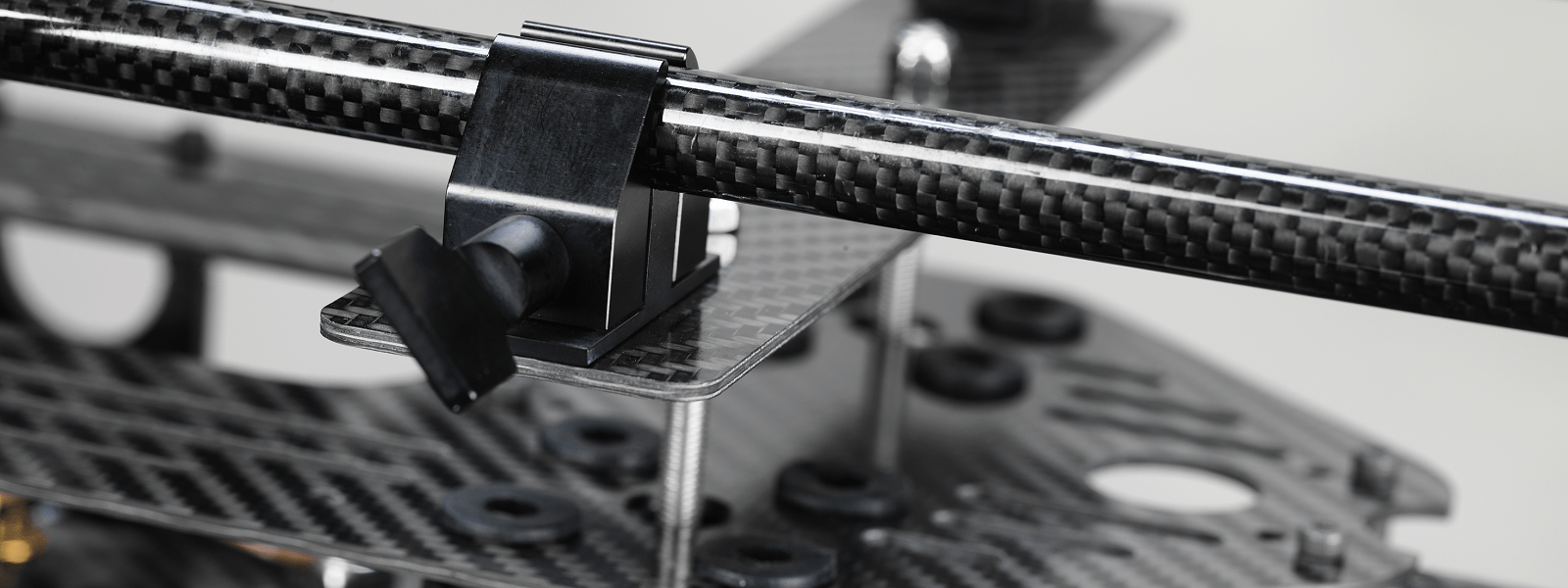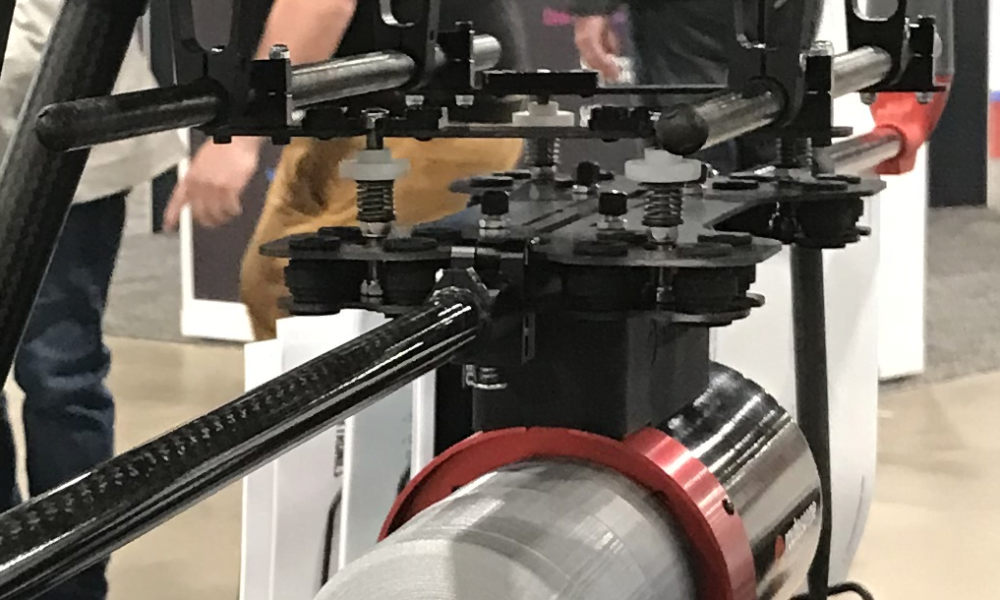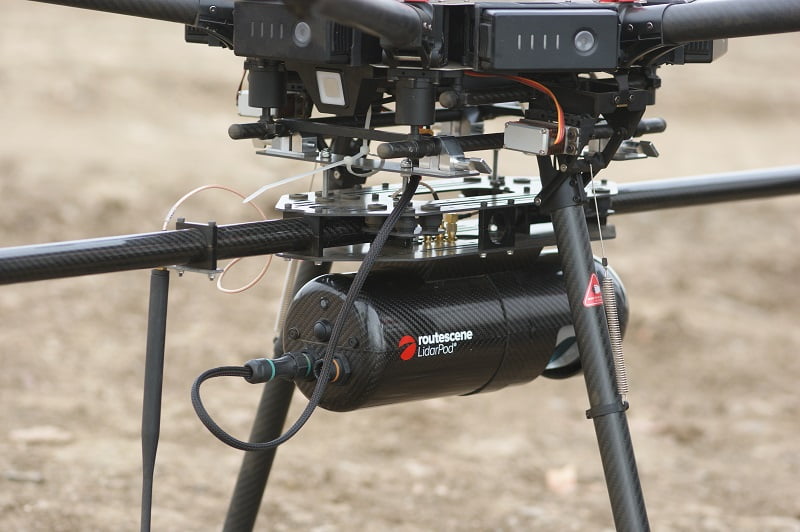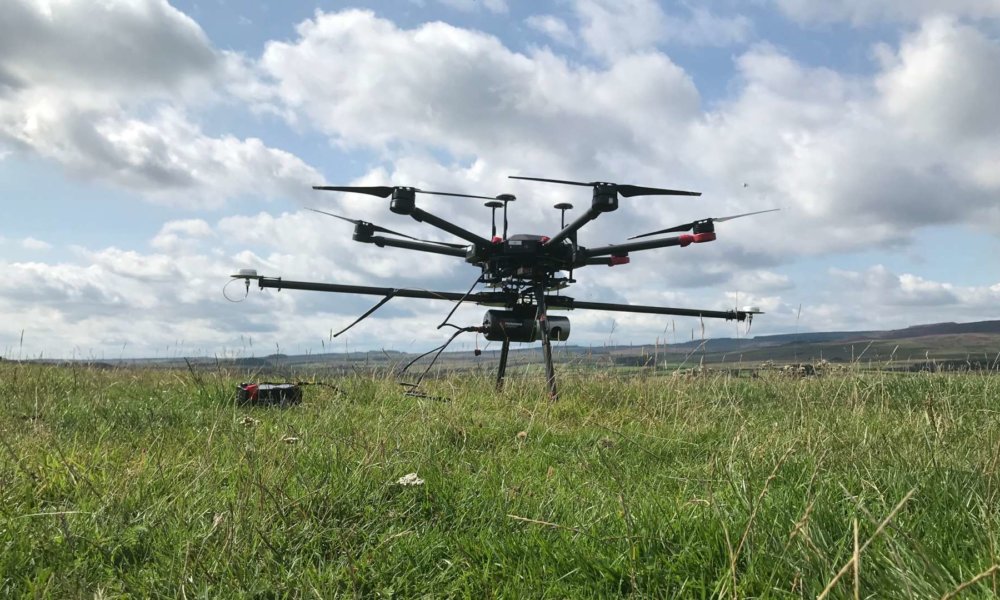UAV LiDAR integration
Drone mounting solution for simple and quick deployment.

Payload
Our UAV LiDAR Systems are drone agnostic. Designed to fly on any aerial platform that can carry a payload of between 4.4lbs / 2.0kg and 5.3lbs / 2.4kg, the weight depends on the LidarPod configuration you choose. The specified weight includes the LidarPod and integrated GNSS antennas and poles, the UAV radio telemetry antenna, cables and the UAV mounting system.
Easy multi rotor drone integration
We provide a complete mounting solution for multi rotor drones including:
1. Mechanical integration
Anti-vibration mounting kit for simple integration
The LidarPod has been flown on numerous models of commercial drone and our specially designed vibration damping mounting system allows for simple integration on any multi rotor UAV. Made from carbon fiber it is lightweight to reduce the impact on flight times. Created to reduce the transmission of vibrations from the UAV to the LidarPod, the mounting system connects directly onto the drone and is easy and quick to deploy.
Once mounted, simply plug the power cable into the LiDAR System and switch the unit on to begin your survey.

New easy to deploy mounting system design
Technical specification:
The UAV mounting system can easily be modified to integrate with your chosen drone. It includes 2 mounting plates, a top plate, tube clamps and quick release connectors.
The mounting plates are compatible with 12mm diameter UAV equipment rails, spaced 5.9-6.1inches / 150-155mm apart, which is the standard for most industrial drones. Each mounting plate contains 2 x 12mm tube clamps which are used to permanently fix the mounting plates to your drone.
The top plate, attached to the LidarPod unit, slides onto the mounting plates using upright quick-release connectors for quick deployment. For extra security thumb screws are tightened to ensure the LiDAR System is robustly mounted.
2. Electrical integration
Powered directly from your drone
The LidarPod is a self contained unit and is simple to set up ready for use. It is powered from the UAV via an XT60 connector. The LidarPod power requirement is low (28W) and has a negligible effect on the endurance of the UAV.
Note: The LidarPod can be powered using a dedicated 3S battery however this also adds to the total payload weight and may prove to be the least efficient method overall.

LidarPod and UAV electrical integration
Technical specification:
The LidarPod supports a wide voltage input range (11-48VDC). This enables it to be compatible with drones that use a high voltage electrical system, this is more efficient and minimizes power losses.
3. Dual heading GNSS
The LidarPod has 2 LidarPod GNSS antenna and hinged, foldaway antenna poles integrated to provide a high accuracy dual heading solution. No assembly or tools required.
The dual GNSS antennas enable a very accurate heading to be determined in low dynamic operations such as those encountered during a UAV LiDAR survey.

Dual heading GNSS
Technical specification:
Routescene’s UAV LiDAR Systems use two lightweight survey grade GNSS antennas which are optimized for dual frequency GNSS signals. They are tuned to ensure optimum RTK performance and are designed to withstand extreme conditions. The antennas used to determine the heading are mounted on two carbon fiber poles extended in the fore and aft direction relative to the LidarPod and drone.
